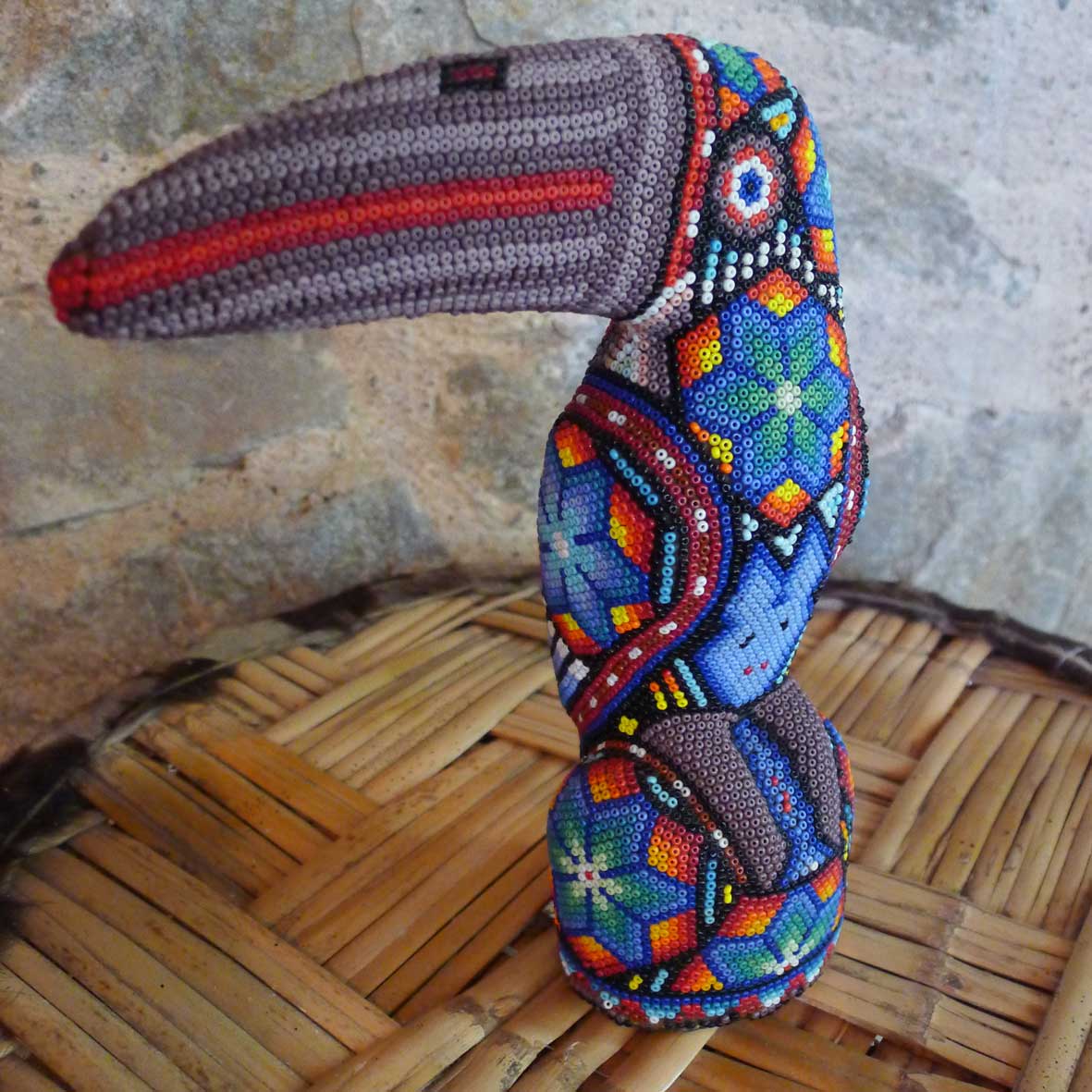Huichol Art
The rugged mountains and remote villages of the western Sierra Madre of the states of Nayarit, Jalisco, Zacatecas and Durango are the homeland of approximately ten to fourteen thousand Huichol Indians. They were amongst the last indigenous peoples to come under Spanish rule, and today have their own designated territory. Their religion is shamanistic incorporating several important natural deities.
- Deer is the most sacred of all animals, its blood a symbol of fertility
- Corn is the source of all life, for it was Nakawe, mother of all gods, who gave corn to the first man for planting, and from it was born the first Huichol woman
- The Peyote is a means of communication with the gods, and the consumption of peyote by the Huichol people is a deeply religious experience
The unity of these three elements — deer, corn, and peyote — is the fundamental core of Huichol beliefs.
The Huichols express their feelings through their art, which is made not from the standpoint of decoration, but to give profound expression to deep spiritual beliefs. The art is very detailed; the bead art also known as “chaquira” involves placing each bead individually. Some pieces have tens of thousands of beads. Huichol people also create pieces of art with the use of colored yarns, and are renowned for their double-cloth weaving, making strong bags and belts particularly for their own use. The intense feelings involved in the making of all the artwork endow it with a sense of beauty fascinating not only from an aesthetic standpoint but from the psychological as well.
Huichol Yarn Art
Until very recently, the Huichol people of Mexico did not have a written language. Instead, they communicated their history through stories and symbols. This tradition is still strong for Huichol today and we can learn a lot about their beliefs by looking at their artwork. “Nierikas” are yarn paintings made by the Huichol people. It is said that when the first anthropologists arrived, a young shaman called Juan Ríos Martínez made the first yarn paintings to explain the Huichol world to them.
Natural glue, made from tree resin and beeswax, is applied to a board, and yarn is pressed into it and left to harden. The designs and symbols on the Nierikas are based on their myths, stories and daily life. The yarn paintings portray the Huichol belief that people are connected to nature and all living things. The Huichols believe it is their duty to take care of the earth because they depend on it for survival.
Nierikas are not purely decorative objects; they are purposeful and very important to the Huichol people. These spiritual artworks are part of the rituals the Huichols participate in on a regular basis, and they begin learning them at a very young age. A Nierika is a device that allows a Huichol person to communicate with the spirit world. The symbols and rituals on them are a way of asking the gods to bring rain and sun to grow their crops. After creating them, the Nierikas are left in sacred places like temples, springs, and caves.










